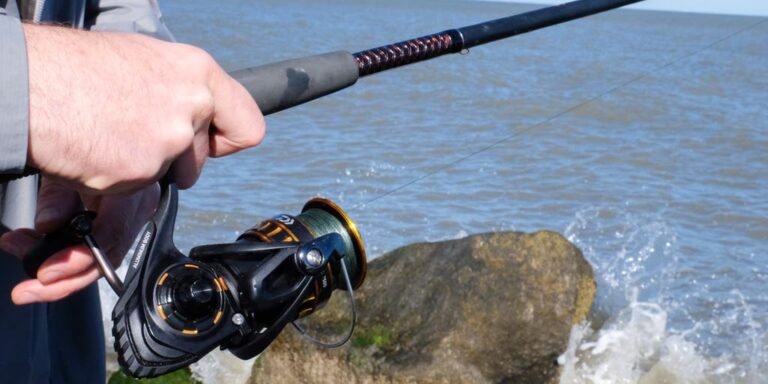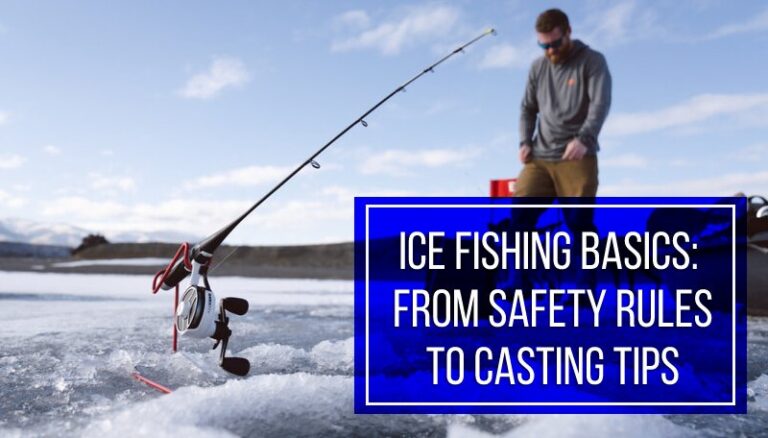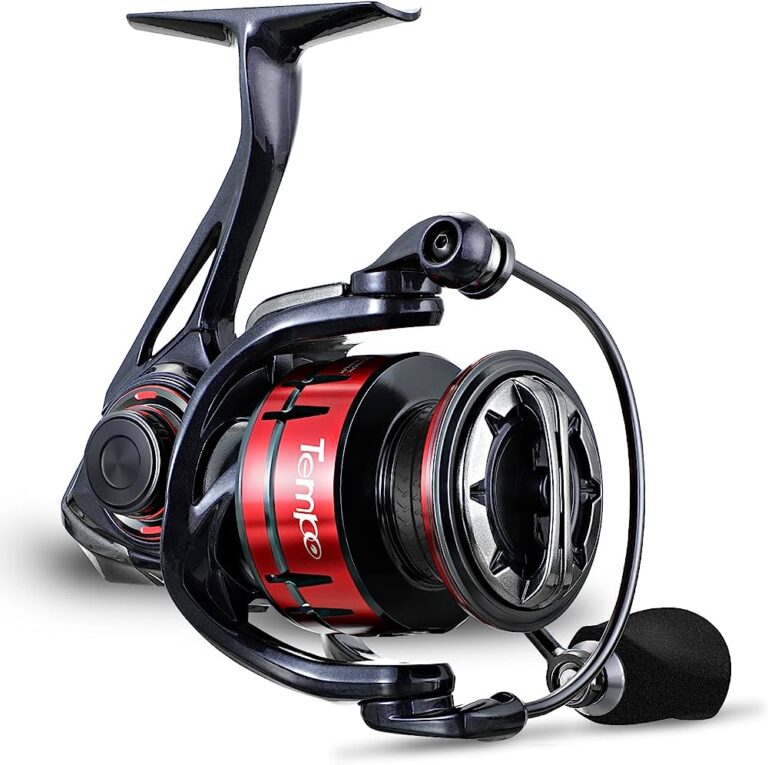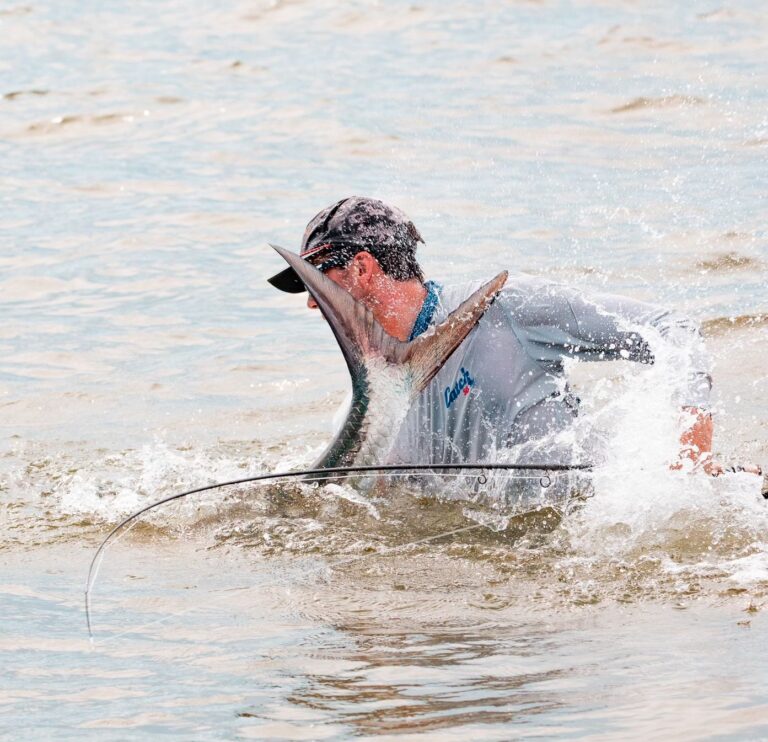To choose the right size and color of spinning baits, consider the target fish species, water conditions, and weather. Match the bait’s size to the expected prey and adjust the color to the water clarity, prevailing weather conditions, and prevailing forage colors.
When it comes to selecting the right size and color of spinning baits, it is crucial to understand that various factors come into play. Making an informed decision based on the target fish species, water conditions, and weather can greatly improve your chances of success.
Size matters as you want to match the bait’s size to the expected prey, ensuring it looks realistic and appealing to the fish. Additionally, it is important to consider the color of the bait in relation to the water clarity, prevailing weather conditions, and the colors of the forage typically found in that area. Taking these factors into account can greatly enhance your fishing experience and increase your chances of a successful catch.
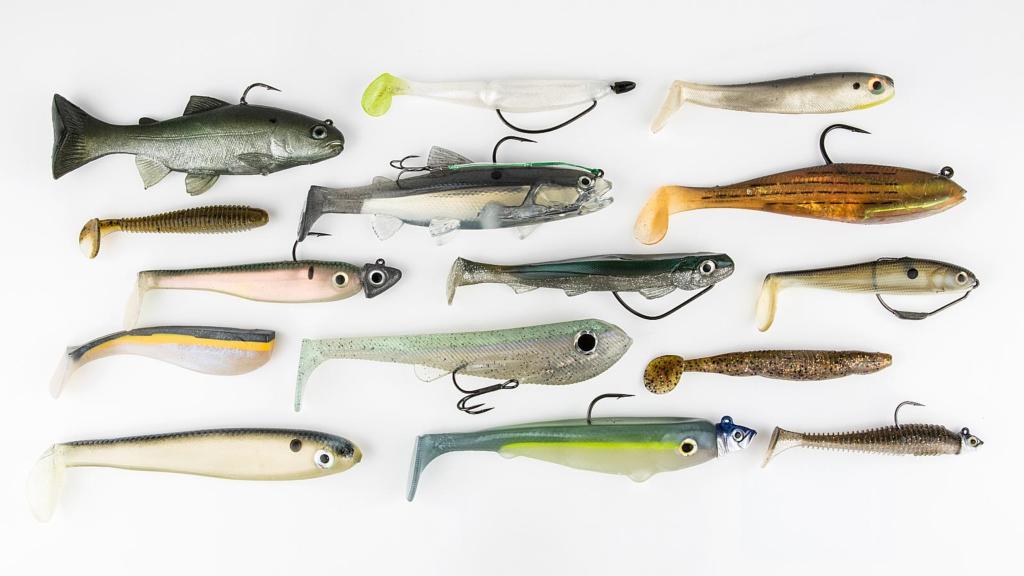
Credit: majorleaguefishing.com
Understanding The Basics Of Spinning Baits
Spinning baits are a popular choice among anglers due to their versatility and effectiveness in attracting fish. Whether you’re a seasoned angler or just starting out, understanding the basics of spinning baits is crucial for a successful fishing experience. In this section, we will dive into what spinning baits are, how they work, their advantages, and the importance of size and color when choosing the right spinning bait.
What Are Spinning Baits?
- Spinning baits are artificial lures designed to mimic the appearance and movement of small baitfish or aquatic prey.
- They typically consist of a weighted body, often made of metal, with one or more hooks attached.
- Spinning baits come in a variety of shapes, sizes, and colors to imitate different types of forage and attract various fish species.
How Do Spinning Baits Work?
- Spinning baits work by creating vibrations and flash in the water, enticing fish to strike.
- When retrieved, the spinning bait’s rotating blade or propeller creates movement and disturbance in the water, mimicking the natural motion of prey.
- The combination of the bait’s appearance, movement, and sound can trigger predatory instincts in fish, enticing them to attack.
The Advantages Of Using Spinning Baits
- Versatility: Spinning baits can be used in both freshwater and saltwater environments, making them a versatile option for anglers targeting different species in various locations.
- Attractiveness: The flash and vibration produced by spinning baits make them highly enticing to fish, increasing the chances of attracting bites.
- Distance and accuracy: Spinning baits are designed for casting, allowing anglers to cover a larger area and reach fish that may be further away.
- Durability: Spinning baits are typically made to withstand the rigors of fishing, offering anglers a durable and long-lasting option.
The Importance Of Size And Color In Spinning Baits
- Size: Choosing the right size spinning bait is crucial for imitating the forage that the target fish are feeding on. Smaller baits are ideal for imitating small baitfish, while larger baits can mimic larger prey.
- Color: The color of spinning baits plays a significant role in attracting fish. Bright colors like chartreuse or red can be highly visible in murky water, while natural colors like silver or shad can imitate realistic prey. Experimenting with different colors is key to finding what works best in your fishing location and conditions.
Understanding the basics of spinning baits is essential for any angler looking to improve their fishing success. Knowing what spinning baits are, how they work, their advantages, and the importance of size and color will help you make informed choices when selecting the right spinning bait for your fishing needs.
So grab your gear, find the perfect spinning bait, and get ready to reel in the big catch!
Selecting The Right Size Spinning Bait
Factors To Consider When Choosing The Size
When it comes to selecting the right size spinning bait, there are several important factors to consider. The size of the bait can greatly influence your chances of success, so it’s essential to choose wisely. Here are some key points to keep in mind:
- Target species and their feeding habits: Different fish species have varying preferences when it comes to bait size. Understanding the feeding habits of your target species can help you determine the appropriate size of spinning bait to use. For example, larger predatory fish may be more attracted to bigger baits, while smaller fish may prefer smaller offerings.
- Water conditions and visibility: The clarity of the water and the prevailing conditions can impact the visibility of your spinning bait. In clear water, smaller baits tend to be more effective as they appear more natural. On the other hand, in murky water or low-light conditions, larger baits may be more visible and attract attention.
- Time of year and weather conditions: The time of year and prevailing weather conditions can also influence the size of the spinning bait you should choose. For example, during the spawning season or when fish are actively feeding, larger baits can mimic the prey fish that are abundant at that time. In contrast, during colder months or when fish are less active, smaller baits may be more effective.
Popular Size Options And Their Applications
Now that we’ve covered the factors to consider, let’s explore some commonly used size options for spinning baits and their applications:
- Small-sized spinning baits: Ranging from 1/16 to 1/4 ounce, small-sized spinning baits are ideal for targeting smaller fish species or when fishing in clear, calm waters. They can be effective for finesse fishing techniques such as drop shotting or fishing with light spinning tackle.
- Medium-sized spinning baits: With weights between 1/4 and 1/2 ounce, medium-sized spinning baits strike a balance between attracting larger fish and maintaining versatility. They are suitable for a variety of fishing techniques, including casting, trolling, or working with a bottom bouncing rig.
- Large-sized spinning baits: Weighing in at 1/2 ounce or more, large-sized spinning baits are designed to target larger predatory fish. They are commonly used for techniques like casting or vertical jigging, and they can be effective in both freshwater and saltwater environments.
Matching The Size To The Fishing Technique
Choosing the right size spinning bait also involves matching it to your fishing technique. Here are a few tips to consider:
- Casting: When casting, consider using smaller to medium-sized spinning baits that can be accurately thrown and cover a wider area. Smaller baits are also less likely to spook fish.
- Trolling: For trolling, larger spinning baits can create more vibrations and attract attention from a distance. They also have a better chance of enticing larger predatory fish.
- Vertical jigging: In vertical jigging, larger spinning baits with a heavier weight can help reach deeper waters more effectively. Their larger size can also catch the attention of fish as they move vertically.
Remember to experiment with different sizes and observe how the fish respond. By considering the factors mentioned, understanding the popular size options, and matching the size to your fishing technique, you’ll increase your chances of success on your next fishing trip.
Happy angling!
Choosing The Perfect Color For Spinning Baits
The Role Of Color In Attracting Fish
When it comes to choosing the right spinning bait, color plays a crucial role in attracting fish. Different colors can mimic natural prey, catch the attention of fish, or help the bait stand out in the water. Understanding the significance of color and how it affects fish behavior is essential for successful fishing.
Understanding The Color Spectrum Underwater
Underwater, colors appear differently due to the way light is absorbed and reflected. The color spectrum is affected by water clarity, depth, and lighting conditions. It’s important to take these factors into account when selecting the color of your spinning bait.
Key Factors To Consider When Selecting The Color
When choosing the perfect color for your spinning bait, consider the following key factors:
- Water clarity and visibility: In clear water, using natural or realistic color patterns can be effective, while in murky or stained water, opting for high-contrast or dark color patterns may work better.
- Lighting conditions and time of day: The amount of sunlight and the angle at which it hits the water can influence how fish perceive colors. Bright and flashy colors tend to work well in sunny conditions, while darker colors may be more effective during low-light periods.
- The natural prey of the target species: Researching the natural prey of the fish species you’re targeting can provide valuable insights into the colors that are most likely to attract them. Matching the color patterns of their favorite prey can increase your chances of success.
Exploring Different Color Options
When it comes to spinning bait colors, anglers have a wide range of options to choose from. Here are three popular color categories to consider:
- Natural and realistic color patterns: Mimicking the colors of natural prey, such as minnows or crawfish, can fool fish into thinking the bait is the real thing. Earth tones, greens, browns, and blues are commonly used in these patterns.
- High-contrast and flashy color patterns: Vibrant colors like chartreuse, orange, and pink create a contrast that can attract fish from a distance. These patterns can be useful in dirty water or when fish are actively feeding.
- Dark and silhouette-like color patterns: Black, purple, and dark blue baits can create a silhouette against the sky or light background, making them stand out in low-light conditions. This can trigger predatory instincts and entice fish to strike.
Personal Preferences Vs. Fish Preferences: Finding A Balance
Keep in mind that personal preferences and fish preferences may not always align. While certain colors might appeal to anglers, the ultimate goal is to entice fish to bite. Experimentation and observation are key to finding the balance between your personal preferences and what the fish are actually attracted to.
By considering water clarity, lighting conditions, the natural prey of the target species, and exploring different color options, you can increase your chances of selecting the perfect color for your spinning bait. Remember to stay open to adaptation and always be prepared to switch colors if you’re not getting the desired results.
Happy fishing!
Fine-Tuning Your Presentation Techniques
Spinning baits are a versatile and effective fishing tool. By choosing the right size and color, you can greatly increase your chances of attracting and hooking the fish you’re targeting. However, selecting the perfect bait is only the first step.
Fine-tuning your presentation techniques is equally important to entice the fish and make them strike. In this section, we will explore several key techniques that can help you improve your presentation and maximize your success on the water.
Adjusting The Retrieve Speed And Cadence
- Varying the retrieve speed and cadence can be a game-changer when it comes to triggering strikes from fish.
- Experiment with fast and slow retrieves to see what the fish prefer on a particular day.
- Pay attention to the response of the fish and adjust your retrieve accordingly.
- Alter the cadence by pausing and resuming the retrieve, mimicking the behavior of injured prey.
- Remember, each species and situation may require a different retrieve speed and cadence, so be willing to adapt and experiment.
Adding Pauses And Twitches To Mimic Injured Prey
- By incorporating pauses and twitches into your retrieve, you can imitate the erratic and vulnerable movements of injured prey.
- Pause briefly after a few turns of the reel handle, allowing the bait to sink or suspend momentarily before resuming the retrieve.
- Give the rod tip a subtle twitch or jerk during the pause to create a slight disturbance in the water.
- These pauses and twitches can trigger reactive strikes from fish that are actively seeking weakened or injured prey.
Using Different Rod Movements And Angles
- The way you manipulate your rod can make a significant difference in the presentation of your spinning bait.
- Experiment with subtle rod twitches, lifts, and drops to add lifelike action to your bait.
- Vary the angle at which you retrieve, making lateral sweeps or upward lifts to mimic a fleeing or injured prey.
- Keep in mind the natural movement patterns of the fish you are targeting and try to replicate them through your rod movements.
Experimenting With Depth And Water Column Coverage
- Fish can be found at different depths throughout the water column, so it’s important to explore different depths to find where the fish are feeding.
- Adjust the weight of your spinning bait or the rate at which you retrieve to target specific depths.
- Start by working the bait close to the surface and gradually work your way deeper if you’re not getting bites.
- Remember, fish behavior can change throughout the day, so be prepared to adjust the depth and coverage accordingly.
Paying Attention To Line And Leader Selection
- The choice of fishing line and leader can impact the presentation of your spinning bait and the success of your fishing trip.
- Opt for a thinner line to achieve a more natural presentation and better sensitivity.
- Consider using a fluorocarbon leader to increase stealth and reduce visibility in clear water conditions.
- Make sure the line and leader are strong enough to handle the size and fighting power of the fish you are targeting.
By fine-tuning your presentation techniques through adjust the retrieve speed and cadence, adding pauses and twitches, using different rod movements and angles, experimenting with depth and coverage, and paying attention to line and leader selection, you can increase your chances of success when using spinning baits.
Remember to adapt and experiment based on the conditions and behavior of the fish you are targeting. So, get out there, experiment, and enjoy the thrill of hooking into some impressive fish!
Adapting To Changing Fishing Conditions
Modifying Size And Color Strategies Based On Water Conditions
When it comes to choosing the right size and color of spinning baits, one important factor to consider is the current water conditions. The color and size of your bait can have a significant impact on its visibility and attractiveness to fish.
By adapting your size and color strategies based on the water conditions, you can increase your chances of success on your next fishing trip. Here are some key points to keep in mind:
- Clear water: In clear water conditions, fish have excellent visibility, so it’s important to choose more subtle and natural color patterns. Lighter colors like silver, pearl, and translucent shades tend to work best in these conditions. Opt for smaller sizes as well, as they are less likely to spook fish in clear water.
- Murky or stained water: When the water is murky or stained, visibility is reduced, and fish rely more on vibrations and movements to locate their prey. In these conditions, it’s best to use brighter and more vivid colors that can stand out. Chartreuse, orange, and fluorescent colors are effective choices. Additionally, larger sizes can help generate more movement and attract attention.
- Vegetation and structure: If you’re fishing around vegetated areas or structures like docks or fallen trees, consider using baits that match the color of the surroundings. This helps your bait blend in and appear more natural. A green or brown color pattern can work well in these situations. As for size, choose smaller baits that can maneuver through and around the vegetation without getting tangled.
Adjusting Techniques For Different Seasons And Weather Patterns
Seasonal and weather patterns can greatly impact fish behavior and feeding patterns. Adjusting your techniques accordingly can make a significant difference in your fishing success. Here are some tips to help you adapt to different seasons and weather conditions:
- Spring: During the spring, fish are often more active as they prepare for spawning. Use smaller baits with vibrant colors to mimic prey and trigger their feeding response. Experiment with different retrieval speeds to find what entices them the most.
- Summer: In the heat of summer, fish may be more sluggish and seek shelter in deeper and cooler waters. Use larger baits that can reach these depths and make your presentations more enticing. Find areas with shade or cover and focus your efforts there.
- Fall: As temperatures cool down in the fall, fish become more aggressive in their feeding habits, preparing for the upcoming winter. Use a variety of baits in different sizes and colors to mimic the abundance of prey available. Be prepared to adjust your techniques as fish behavior can change rapidly during this season.
- Winter: In colder temperatures, fish metabolism slows down, making them less active. Use smaller baits and slow your retrieve to appeal to their limited energy levels. Focus on fishing in deeper waters where fish tend to congregate to find warmer spots.
Adapting To Fish Feeding Behavior And Preferences
Understanding fish feeding behavior and preferences is crucial when choosing the right size and color of spinning baits. Fish have different feeding habits and can be attracted to specific colors and sizes depending on the conditions. Here are some key points to consider:
- Predatory fish: Predatory fish like bass and pike are more likely to be attracted to larger baits that resemble their natural prey. Opt for realistic color patterns that mimic the local baitfish in the area. Experiment with different retrieve speeds and techniques to trigger their predatory instincts.
- Bottom feeders: Fish like catfish or carp often feed on the bottom, so using heavier baits that can sink quickly is essential. Choose bait colors that stand out in the water column to catch their attention. Earth tones like brown and green are popular choices.
- Suspended fish: Some fish species, like trout or salmon, can be found suspending in the water column. In these cases, use baits that mimic their prey’s natural movements. Smaller, more natural-looking baits in silver or gold color patterns work well to entice these fish.
Understanding The Importance Of Trial And Error
When it comes to selecting the right size and color of spinning baits, there is no one-size-fits-all solution. Each fishing scenario is unique, and it often requires trial and error to find the winning combination. Here’s why:
- Fish can be finicky: Fish behavior can change from day to day, so what worked yesterday might not work today. Don’t be afraid to experiment with different colors and sizes to see what elicits the best response.
- Learning from experience: As an angler, each fishing trip provides valuable insights. Take note of patterns and trends in fish behavior based on the size and color of your bait. Use this knowledge to improve your strategies in future outings.
- Adapting to new environments: When fishing in unfamiliar waters, it’s crucial to test different baits to figure out what the fish are biting. Local conditions and fish preferences may differ from your home fishing spot.
By embracing trial and error and being adaptable in your bait selection, you can maximize your chances of success and become a more effective angler. Remember, the journey itself is part of the fun, and every failed attempt brings you one step closer to finding the perfect combination of size and color for your spinning baits.
Expert Insights And Recommendations
When it comes to choosing the right size and color of spinning baits for your fishing adventures, you can greatly benefit from the knowledge and experience of seasoned anglers and fishing guides. These experts have spent countless hours on the water, honing their skills and observing what works best in various scenarios.
Here are some invaluable insights and recommendations they have to offer:
Advice From Experienced Anglers And Fishing Guides
- Start with the basics: It’s important to begin with the fundamentals when selecting the size and color of your spinning bait. Beginners should opt for smaller bait sizes (around 1/8 to 1/4 ounce) and natural color patterns that mimic the local baitfish or forage species.
- Experiment with different sizes: As you gain more experience, don’t be afraid to try different bait sizes. Some experts recommend using larger baits (up to 1/2 ounce or more) when targeting bigger game fish or in situations where you need to cover more water quickly.
- Consider the water conditions: The clarity and depth of the water can greatly influence your bait selection. In clear water, it’s best to choose more natural, subtle colors, while in murky or stained waters, brighter and more vibrant colors may be more effective in grabbing the attention of fish.
- Match the hatch: Pay close attention to the local forage base and try to match your bait to the prevalent species in the area. If there are a lot of shad or minnows present, choose bait colors that closely resemble them.
- Adapt to the season: The time of year can also play a role in bait selection. During the warmer months, when fish are more active, you can experiment with a wider range of colors and sizes. In colder months or when fish are less active, stick to smaller baits in natural colors for a more finesse approach.
Recommended Spinning Bait Size And Color Combinations For Various Scenarios
- Clear, calm water: Opt for smaller baits (1/8 to 1/4 ounce) in natural colors such as silver or gray. Match the size and color to the prevalent forage species in the area.
- Murky or stained water: Use brighter and more vibrant colors like chartreuse or firetiger to improve visibility and attract attention. Choose larger bait sizes (up to 1/2 ounce) to create more vibration and noise to overcome the turbid water conditions.
- Fishing for bass: Bass are opportunistic predators and can be successfully targeted with a variety of bait sizes and colors. Popular choices include green pumpkin, black and blue, or white and chartreuse combinations.
- Trout fishing: For trout, smaller bait sizes (1/8 to 1/4 ounce) in natural colors such as brown or olive can be effective. However, some anglers also find success with brighter colors like pink or orange.
- Saltwater fishing: Depending on the target species, spinning baits in sizes ranging from 1/4 to 1 ounce can be used. Consider using colors that imitate the local baitfish, such as silver or white for shad, or blue and silver for mackerel.
Real-Life Examples Of Successful Bait Selection And Presentation
- Angler a caught a trophy bass by using a 1/2 ounce black and blue jig in a heavily weeded area. The dark color helped the bait stand out against the vegetation, while the larger size enticed the bass to strike aggressively.
- Fishing guide b consistently catches trout using a 1/8 ounce brown spinner in a small stream. The natural color closely mimics the local aquatic insects, which are a major food source for trout in that area.
- Angler c landed a trophy redfish in saltwater by casting a 1/2 ounce silver spoon near grass beds. The shiny, reflective surface of the bait imitated the flash of a fleeing baitfish, triggering a predatory response from the redfish.
Common Mistakes To Avoid When Fishing With Spinning Baits
- Choosing the wrong size: A bait that is too large or too small for the target species can significantly reduce your chances of success. Always research the preferred forage size of the fish you are targeting.
- Ignoring water conditions: Failing to take into account the clarity and depth of the water can lead to poor bait visibility and lower catch rates. Adjust your bait choice accordingly.
- Overcomplicating color selection: While color can make a difference, don’t get overwhelmed by the vast array of options. Stick to natural colors as a starting point and adjust as necessary based on the conditions and forage available.
- Neglecting to experiment: Don’t be afraid to try different sizes and colors until you find what works best on a particular day. Fishing can be unpredictable, so be willing to adapt and experiment with your bait selection.
By following the expert insights and recommendations from seasoned anglers and fishing guides, you can increase your chances of selecting the right size and color of spinning bait for a successful fishing trip. Remember to consider the water conditions, adapt to the season, and take cues from the local forage base.
Avoid common mistakes and be open to experimentation to find what works best in your fishing adventures. Happy fishing!
Conclusion
When selecting the right size and color of spinning baits, it can be a game-changer in your fishing experience. The size and color of your bait can significantly impact your chances of attracting and enticing fish to bite. By using larger baits, you can target bigger fish species, while smaller baits are ideal for smaller fish.
Additionally, choosing the right color of your bait can make a difference in different water and weather conditions. Bright and vibrant colors work well in clear water, while natural and subtle colors are effective in murky water. Furthermore, considering the specific prey fish in the area can help you choose a color that closely resembles their appearance.
So, whether you are an experienced angler or a beginner, taking the time to select the right size and color of spinning baits can greatly improve your fishing success and increase your chances of landing that trophy fish.

